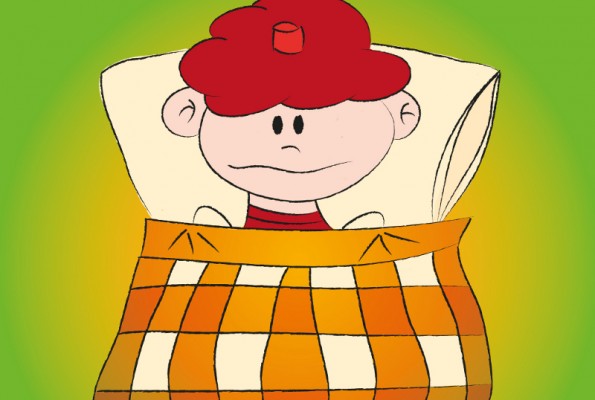Is bed dangerous?

As long as it is only a matter of quaking, no problem, not even when there is just some dust, but – when we least expect it – the bed can become a place of accidents, a real domestic danger. From suffocation to trauma, from scalding to poisoning, the bed represents a potential hazard for both grown-ups and children.
Traumas from falling from the bed
As an average, an adult moves some fifty times during the night’s sleep; thanks to a block in the muscle tone and to the 'intimacy' with one’s own bed, the risk of falling is almost null. Sleeping in a new place exposes to the risk of falling as the body needs to get used to the new bed. The same applies to sleeping in the bunk beds (mainly at the upper levels) and in the train cots. Sometimes, in cases of special stress, you may happen to have agitated sleep and fall onto the ground in the middle of the night. Even though - in the largest majority of cases - these falls carry no consequences the impact with the floor may cause hematomas, traumatic brain injury, fractures and even death (in the USA 450 people die like that every year). In Italy, 22% of old people’s falls occur in the bedroom, whilst the record of fatalities belongs to Hungary. Also mind the obstacles close to the bed, such as chairs, mallets of bag; stumbling at night may be very painful...Scalding from electric blanket
In cold weather, many chose to use the electric blanket, but such practice is not always healthy... The New York Firemen report that thousands of accidents are caused every year by electric blankets. Besides fires, the electric blanket may cause electrocution or – in case of lengthened use – they may be a source of electromagnetic pollution. Even though the safety of the systems has made great strides, it is advisable to be cautious and take off the plug before entering the bed.Other hazards in the bedroom
The risk of poisoning in the bedroom is higher that we might think:- Some moth-proof products may contain irritating chemicals
- Environment deodorants may be harmful to some subjects (asthmatic people, children)
- Stove and boilers generate carbon monoxide, which is potentially fatal
- The detergents contain tension-active products which – in some cases – are synthetic; the bed sheets must me accurately flushed in order to eliminate every residue
- For those who are suffering from MCS (Multiple Chemical Sensitivity), everything must be washed with special detergents, including the bed sheets, in order to prevent allergic attacks
- The Herpes Zoster virus may permeate into the bed sheets; handling the bed sheets a contaminated person has slept in before washing them exposes to such risk
- The Mediterranean Recluse Spider may sneak into the folds of the pillow and bite during the night, causing pain and – in case of allergic subjects – severe consequences
- A metal frame bed may become a 'Faraday cage', generating issues relevant to electro-sensitivity
Children and hazards in the bedroom
Pediatrician Gianni Caso recommends thoroughly verifying the distance between the mattress and the bars of a child’s bed (in order to prevent the child from being trapped), the height of the bars and the absence of laces or necklaces during sleep. All these elements may become sources of hazard unless they are accurately assessed and managed. As far as the bars are concerned, some experts recommend lowering them as soon as the child is able to climb over them. All this is true, but it is also true that the bed can be a paradise, starting from the mattress. :-)
Veröffentlicht in:

